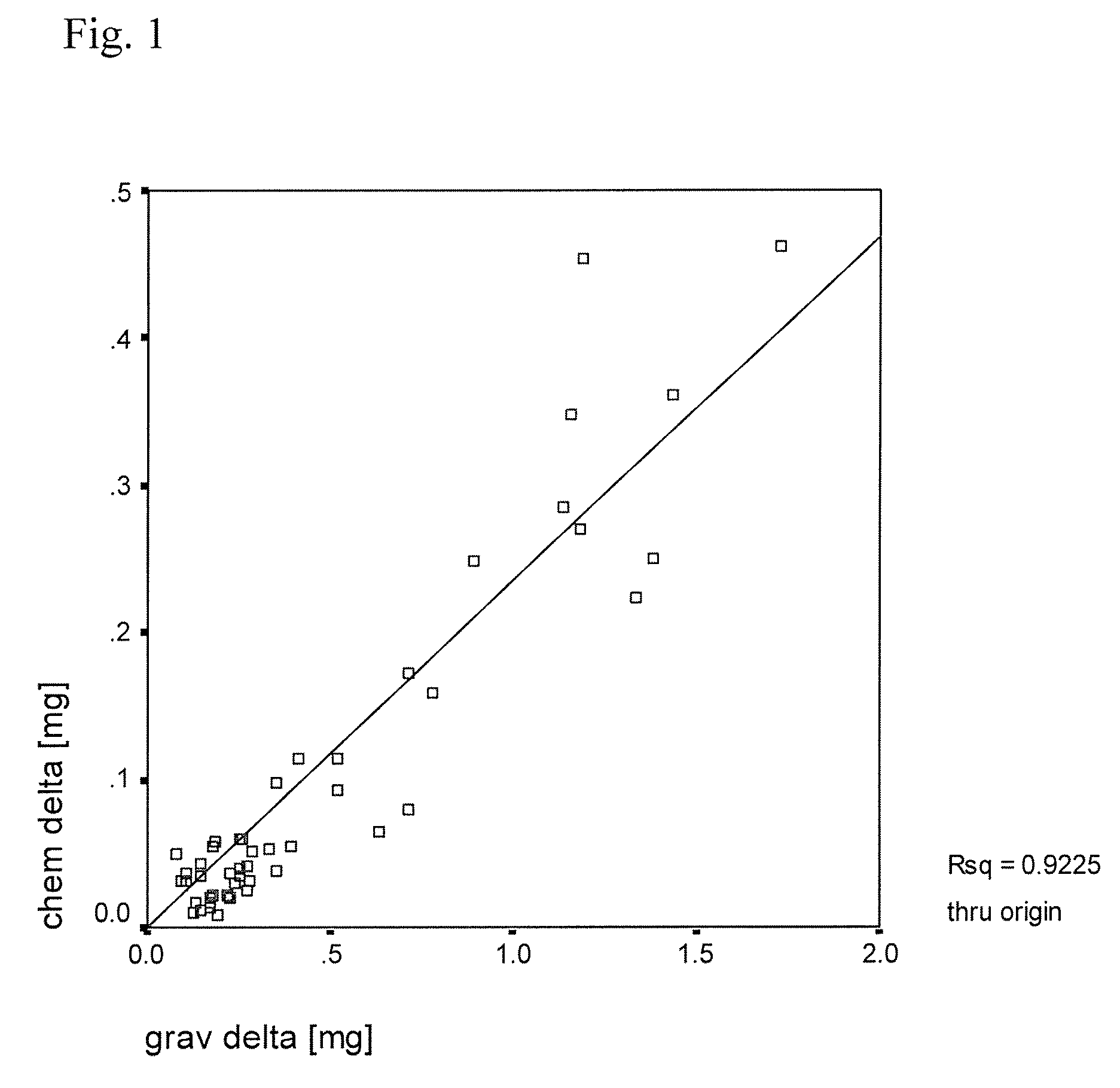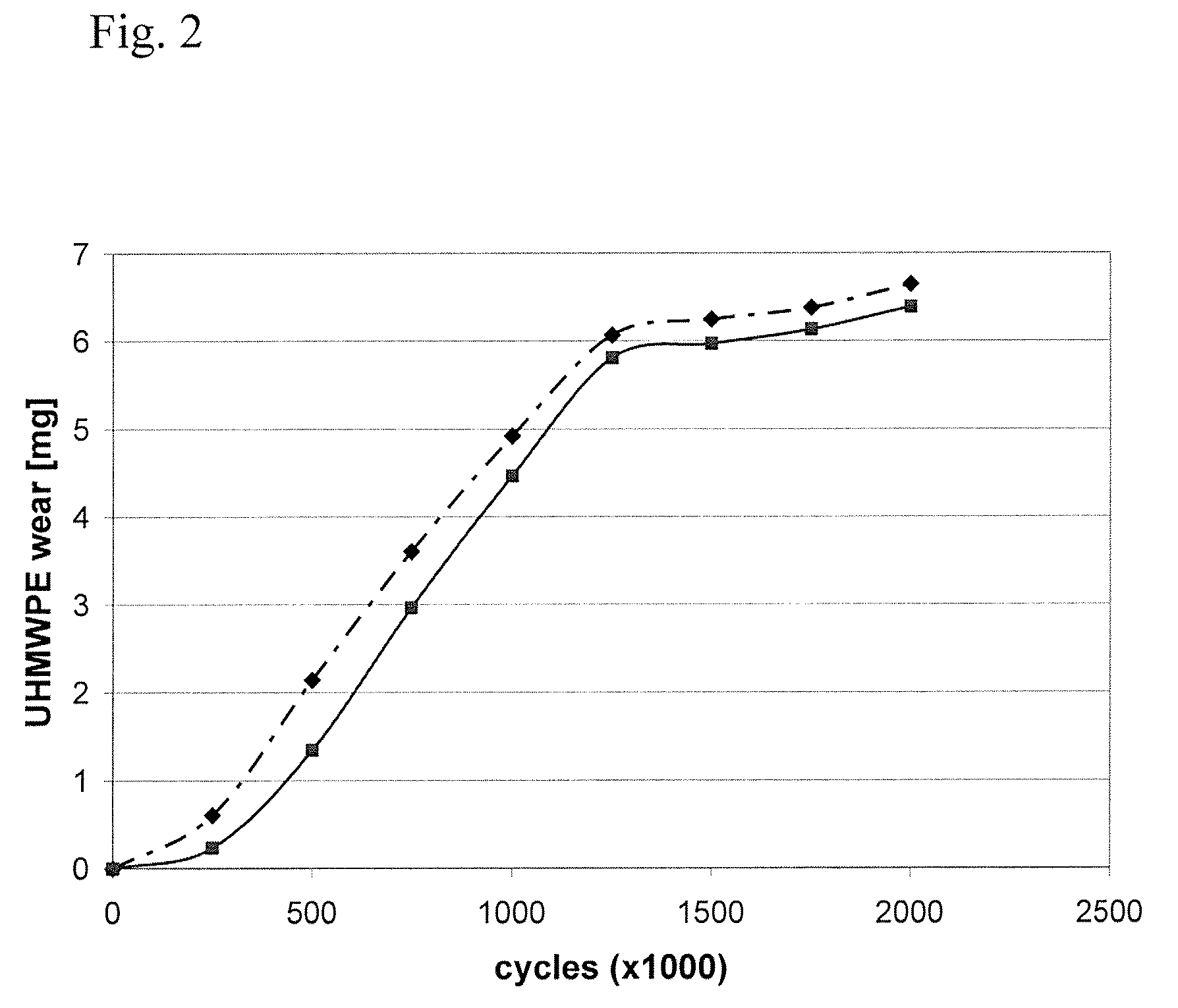Plastic implant impregnated with a degradation protector
a technology of degradation protector and plastic implants, applied in the field of plastic implants, can solve the problems of large bone loss, implant failure, and relative short functional existence, and achieve the effects of prolonging the useful life of the prosthesis, prolonging the useful life of the joint, and easy and accurate diagnosis of degradation of the prosthesis
- Summary
- Abstract
- Description
- Claims
- Application Information
AI Technical Summary
Benefits of technology
Problems solved by technology
Method used
Image
Examples
example 1
Preparation of a Polyethylene Prosthesis Containing Europium Acetate Tracer
[0047]In this example, several small pins of ultra high molecular weight polyethylene (UHMWPE) containing europium acetate tracer were manufactured and their physical properties assayed. To begin, nascent ultra high molecular weight polyethylene powder was mixed with a solution of europium acetate as described in detail below. Different mixing techniques such as liquid nitrogen milling and n-hexane etching were tried to further homogenize the tracer before consolidation. Tracer homogenicity was analyzed by scanning electron microscopy and backward concentration measurement. The pins were then molded (10 mm diameter) and run on a 0.5×0.5 mm square motion pin-on-disk testing apparatus to test the effects of tracer addition on wear. The wear test was conducted in a lubricant that contained 30% bovine serum to simulate the proteins of an in vivo environment. Liquid samples were taken at regular intervals during t...
PUM
| Property | Measurement | Unit |
|---|---|---|
| weight percent | aaaaa | aaaaa |
| diameter | aaaaa | aaaaa |
| diameter | aaaaa | aaaaa |
Abstract
Description
Claims
Application Information
 Login to View More
Login to View More - R&D
- Intellectual Property
- Life Sciences
- Materials
- Tech Scout
- Unparalleled Data Quality
- Higher Quality Content
- 60% Fewer Hallucinations
Browse by: Latest US Patents, China's latest patents, Technical Efficacy Thesaurus, Application Domain, Technology Topic, Popular Technical Reports.
© 2025 PatSnap. All rights reserved.Legal|Privacy policy|Modern Slavery Act Transparency Statement|Sitemap|About US| Contact US: help@patsnap.com


